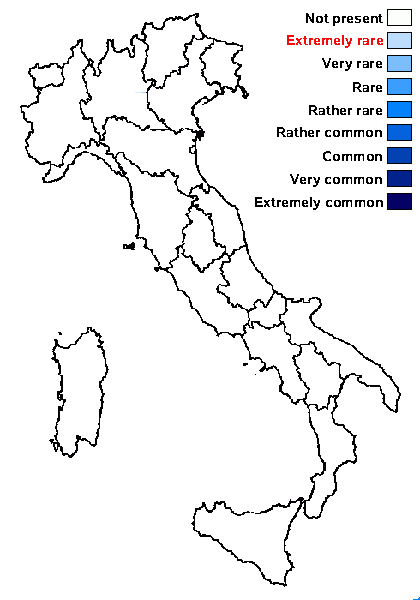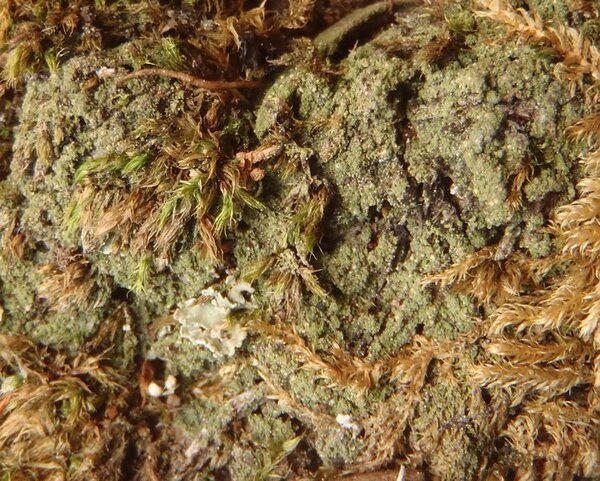Psoroglaena dictyospora (Orange) H. Harada
Lichenology, 2, 1: 9, 2003. Basionym: Macentina dictyospora Orange - Lichenologist, 23: 16, 1991
Synonyms: Leucocarpia dictyospora (Orange) R. Sant.
Distribution:
Description: Thallus crustose, thinly episubstratic or half-endosubstratic, finely granular, entirely composed of more or less globose, 14-23 μm wide goniocysts surrounded by hyphae with colourless, isodiametric to oblong cells measuring 3-8 x 2.5-4.5 μm, those on the exposed surface with several conical papillae measuring 0.7-1.2 x 0.7-0.9 μm, best visible under SEM. Perithecia 0.5-0.8 mm wide when dry, 1.4-2.2 mm wide when moist, immersed, pale orange-brown when dry, broadly ovoid, slightly narrowed towards apex, with a smooth, naked surface and an inconspicuous ostiolar region. Exciple pale throughout, 20-30 μm thick, more or less two-layered, the inner layer of periclinally arranged, elongated cells, the outer layer of isodiametric cells; hamathecium of branched periphyses measuring up to 30 x 2 μm; hymenial gel I + red K/I+ blue. Asci 8-spored, fissitunicate, narrowly clavate, with a rounded apex, K/I-, the wall thickened towards apex, with an ocular chamber, 65-80 x 14-20 μm. Ascospores submuriform, with 5(-6) transverse septa and 1(-2) longitudinal septa, hyaline, fusiform-ellipsoid, widest above the middle, 17-21.5 x (6-)6.5-8 μm, thin-walled, without a perispore. Photobiont chlorococcoid, the cells 4-8 μm wide. Spot tests: K-, C-, KC-, P-, UV-. Chemistry: unknown, probably without lichen substances.Note: on soft wood in humid-shaded situations such as in riverine forests and in gorges; rare throughout temperate Europe, with a single record from the Alps (Switzerland), and also known from North America, but perhaps with a broader distribution, being very easily overlooked. To be looked for in Italy,
Growth form: Crustose
Substrata: lignum
Photobiont: green algae other than Trentepohlia
Reproductive strategy: mainly sexual

Predictive model
Growth form: Crustose
Substrata: lignum
Photobiont: green algae other than Trentepohlia
Reproductive strategy: mainly sexual

Predictive model
 INDEX FUNGORUM
INDEX FUNGORUM
 GBIF
GBIF




